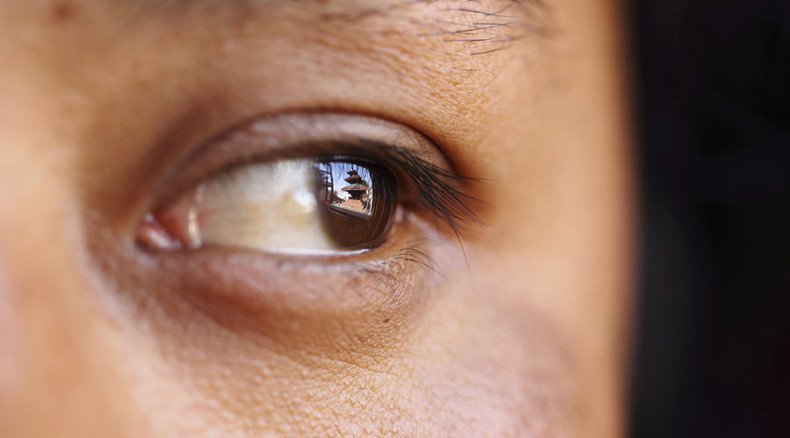Refugee eye scanning data could endanger returnees – expert

Scanning the irises of refugees being resettled in the UK could endanger their lives if data falls into the hands of non-humanitarian groups, one expert told RT.
Plans to use iris scanners to document refugees brought to the UK under plans to resettle 20,000 displaced persons were aired by officials this week.
Andrej Mahecic, spokesman for the UN High Commissioner for Refugees, told The Times on Wednesday that the checks are being carried out in various camps as a means of preventing Islamist fighters from gaining refugee status.
“Registration in countries such as Jordan and Lebanon involves an iris scan and interviews, which are crucial,” he said.
Around 4 million Syrian refugees are said to be in camps in Lebanon, Jordan and Turkey. Prime Minister David Cameron says 20,000 of these refugees will be settled in the UK by 2020.
The data gathered in the camps could then be used by the UK government to confirm the identities of those it chooses to relocate to Britain.
RT spoke to Katja Lindskov Jacobsen, a professor of risk & disaster management at the Metropolitan University College in Copenhagen.
READ MORE: No human is illegal: Safety of refugees is not a moral responsibility, it’s an obligation
“One challenge is that when the technology is used in a more or less experimental manner – for example, to enroll a population size, that exceeds how the technology has previously been used,” said Jacobsen, who is the author of “The Politics of Humanitarian Technology: Good Intentions, Unintended Consequences and Insecurity.”
“The technology may ‘fail’ to perform reliably and when technology failures occur, there is a risk that they can translate into humanitarian failures to assist individuals in need,” she said.
Another more dangerous challenge is the broader issue of how mass data is secured, stored and used.
“In the EU and in the US, citizens have in certain situations protested to have such data collected,” Jacobsen said. Desperate refugees, Jacobsen said, might not have the option of resisting the misuse of their data.
“This opportunity does not exist for refugees, so there is a huge responsibility with the humanitarian actors who collect this data – they must be able to ensure that no actor with non-humanitarian intentions can get access to this data and make use of it.”
Swedish politician in hot water after call to meet refugees with machine gun http://t.co/7OBsBMrU3rpic.twitter.com/cQ6lnHh2JY
— RT UK (@RTUKnews) September 10, 2015This, she argued, could have huge implications for refugees down the line, not least with regard to them eventually returning to their homelands if those nations are eventually stabilized.
“This is, of course, important in highly politicized contexts such as the conflict in Syria, where it would be disastrous for the prospects of a safe return to Syria if the Syrian regime somehow gained access to the biometric refugee data which is being collected by humanitarian actors,” Jacobsen said.
It was revealed Monday that Cameron’s pledge to provide refuge to some Syrians would not prevent children later being deported once they turn 18 years of age.












